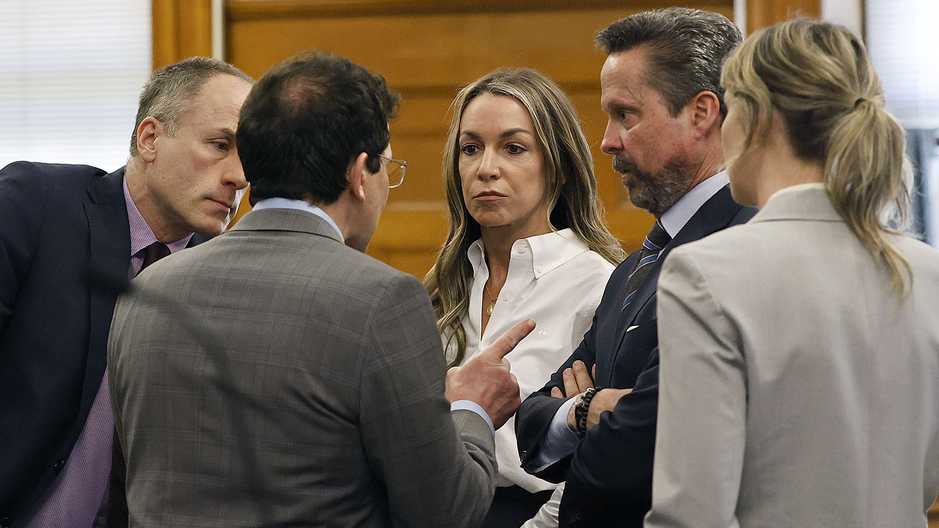The Karen Read retrial has reached a critical juncture as the defense rested its case, claiming it is now ‘stronger’ than the first trial that ended in a hung jury. This high-profile case continues to captivate public attention, raising questions about evidence, testimony, and the pursuit of justice. With closing arguments imminent, the jury faces the weighty decision of determining Read’s fate.
Karen Read, 45, stands accused of second-degree murder in connection with the death of her boyfriend, Boston Police Officer John O’Keefe. Prosecutors allege that Read struck O’Keefe with her SUV during a snowstorm in January 2022. The defense, however, contends a cover-up implicating law enforcement and argues O’Keefe was assaulted inside a home and left outside.
This article summarizes the latest developments in the Karen Read retrial, focusing on the defense’s closing arguments, key testimony, and what to expect as the jury begins deliberations.
Defense Rests Case, Claims Stronger Position in Karen Read Retrial
After weeks of testimony, the defense team representing Karen Read has rested its case. Read’s defense team asserts that their presentation of evidence and witness testimonies has solidified their position, making it ‘stronger’ than during the first trial, which ended in a hung jury. This declaration came after a procedural hearing scheduled to discuss jury instructions before deliberations begin.
“I thought it was strong last year. It’s stronger, yes,” Read told reporters outside the courthouse. “We just pulled more witnesses and laid out more of the case.”
The defense centered its arguments on allegations of a cover-up, suggesting that members of law enforcement fabricated evidence to frame Read. They claim that O’Keefe was beaten inside a home, bitten by a dog, and subsequently left outside in the snow. This narrative seeks to undermine the prosecution’s claim that Read intentionally struck O’Keefe with her SUV.
Key Testimony: Biomechanical Engineer Andrew Rentschler
The defense’s final witness was biomechanical engineer Andrew Rentschler, whose testimony aimed to cast doubt on the prosecution’s theory of the crime. Rentschler argued that if Read’s SUV had hit O’Keefe with sufficient force to break the taillight, O’Keefe’s resulting injuries would have been far more severe than those documented.
“If Read’s SUV hit John O’Keefe with enough force to break the taillight, O’Keefe’s injuries would have to be more severe,” Rentschler testified.
However, Rentschler’s credibility faced scrutiny during a contentious cross-examination. He conceded that the crash-dummy testing conducted by his company had too many uncontrolled variables to be entirely reliable. This concession potentially weakened the defense’s attempt to dispute the physical evidence presented by the prosecution.
Prosecution Foregoes Rebuttal Witnesses
In a surprising turn, the prosecution decided not to call rebuttal witnesses after the defense rested. For months, the prosecution had indicated its intention to present rebuttal witnesses to challenge the defense’s claims. This last-minute change means that the testimony phase of the retrial is now complete, mirroring the conclusion of the first trial.
The decision not to call rebuttal witnesses suggests that the prosecution may feel confident in the strength of its existing evidence and witness testimonies. It also could be a strategic move to prevent the defense from having an opportunity to further question or discredit any new witnesses.
Karen Read Declines to Testify
Karen Read chose not to testify in her own defense, a decision that she was under no legal obligation to make. Additionally, her legal team opted not to call any individuals she has accused of involvement in O’Keefe’s death or the alleged attempt to frame her. This strategic choice underscores the defense’s reliance on challenging the prosecution’s evidence and presenting an alternative theory of the events.
Read’s silence on the stand prevents the prosecution from directly cross-examining her and probing her version of events. However, it also means the jury will not hear her personal account or perspective on the charges she faces.
Jury Instructions and Closing Arguments
With testimony concluded, Judge Beverly Cannone and the legal teams will convene to finalize jury instructions. These instructions will guide the jury in their deliberations by outlining the legal standards and principles they must apply to the evidence presented.
Following the jury instructions, both the prosecution and defense will deliver their closing arguments. These summations provide each side with a final opportunity to persuade the jury, highlighting the evidence that supports their respective cases and challenging the credibility of opposing arguments.
After closing arguments, the jury will begin deliberations to determine whether Read is guilty of second-degree murder and other charges.
What to Know About the Case
Karen Read, 45, is charged with second-degree murder in connection with the death of John O’Keefe. Prosecutors argue that Read struck O’Keefe with her vehicle following a night of drinking. The defense claims O’Keefe was beaten inside a home and left outside as part of a cover-up.
Read’s first trial ended in a hung jury, prompting the current retrial. The defense has consistently alleged a cover-up involving law enforcement, while the prosecution maintains Read is responsible for O’Keefe’s death.
Eighteen jurors were selected for the retrial, with twelve ultimately deliberating on the verdict. Alternates will be chosen and separated before deliberations commence.
Conclusion
As the Karen Read retrial nears its conclusion, the jury faces a complex decision based on conflicting evidence and testimonies. The defense asserts its case is ‘stronger’ than the first trial, while the prosecution aims to prove Read’s guilt beyond a reasonable doubt.
The outcome of this trial will have significant implications, not only for Karen Read but also for the broader community. The case has raised questions about law enforcement integrity, evidence handling, and the pursuit of justice in high-profile criminal proceedings.
Ultimately, the jury’s deliberations will determine whether Karen Read is held accountable for the death of John O’Keefe, or whether reasonable doubt leads to acquittal.

Leave a Reply